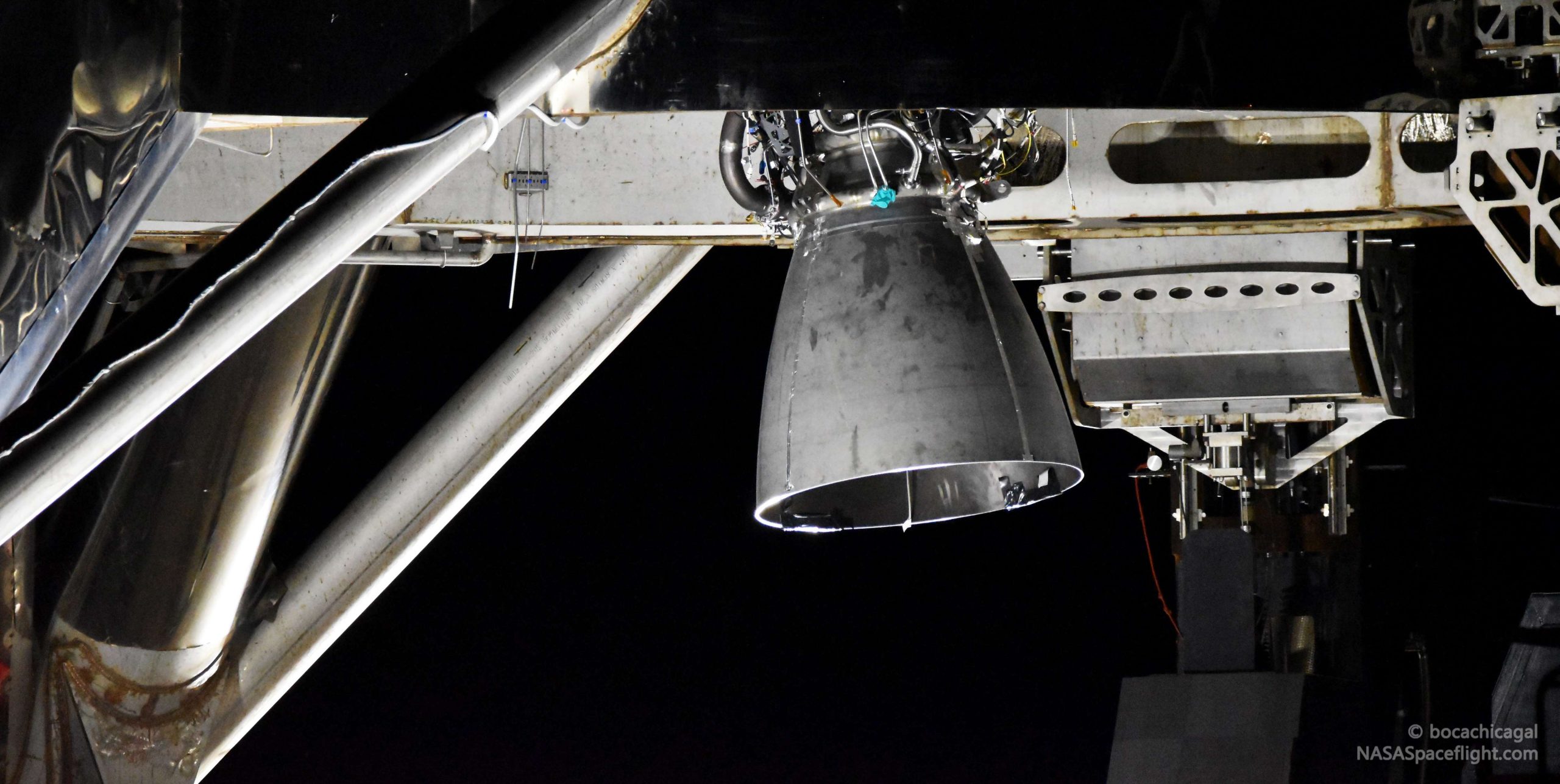
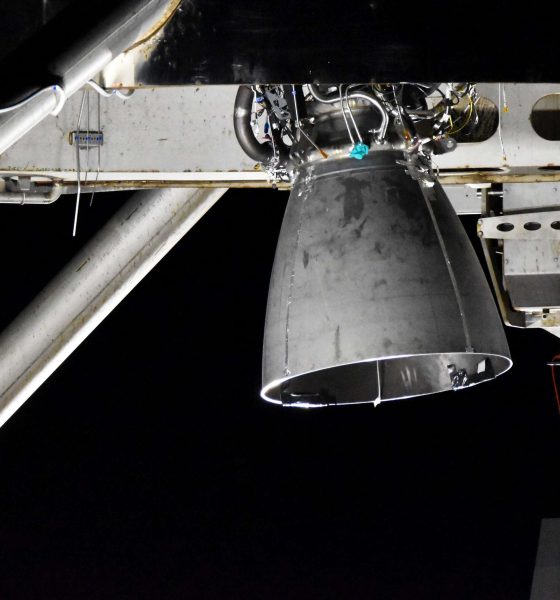
News
SpaceX wiggles Starhopper’s Raptor engine, tests parts ahead of hover test debut
On the evening of July 12th, SpaceX technicians put Starhopper’s freshly-installed Raptor – serial number 06 (SN06) – through a simple but decidedly entertaining test, effectively wiggling the engine in circles.
Designed to verify that Raptor’s thrust vectoring capabilities are in order and ensure that Starhopper and the engine are properly communicating, the wiggle test is a small but critical part of pre-flight acceptance and a good indicator that the low-fidelity Starship prototype is nearing its first hover test(s). Roughly 48 hours after a successful series of wiggles, Starhopper and Raptor proceeded into the next stage of pre-flight acceptance, likely the final more step before a tethered static fire.
Routine for all Falcon rockets, SpaceX’s exceptionally rigorous practice of static firing all hardware at least once (and often several times) before launch has unsurprisingly held firm as the company proceeds towards integrated Starhopper and Starship flight tests. Despite the fact that Raptor SN06 completed a static fire as recently July 10th, SpaceX will very likely put Starhopper and its newly-installed Raptor through yet another pre-flight static fire, perhaps its fourth or fifth test this month.
Although it would undoubtedly be easier, cheaper, and faster to skip that post-delivery static fire, it will simultaneously lower the risk of Raptor failing mid-flight and verify that Starhopper itself is healthy and ready for untethered hovering. Although SpaceX could likely live without Starhopper in the event that it’s lost during flight-testing, any failure capable of destroying the vehicle itself is at least as capable of severely damaging or completely destroying the spartan but still expansive test and launch facilities the company built over the course of several months.
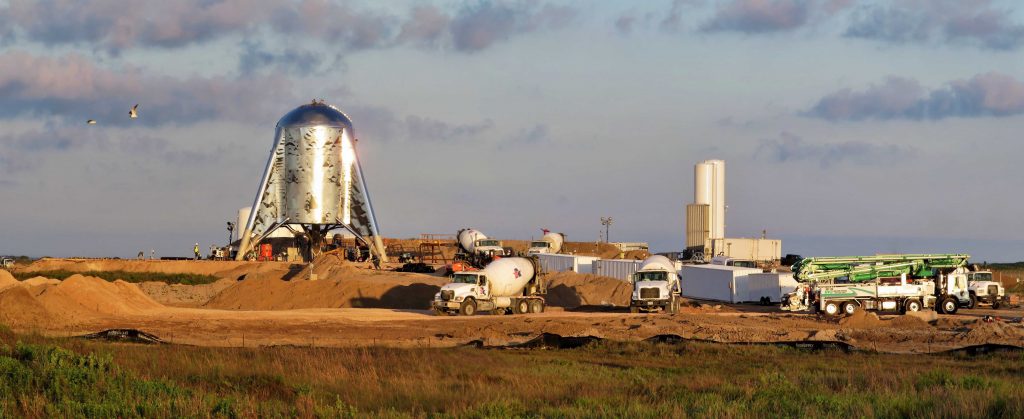
Would you like some testing with your testing?
Follow July 12th’s nighttime Raptor wiggle test, July 13th was mainly quiet and filled with inspections of Starhopper, Raptor, and other various work. The day after, however, SpaceX proceeded through several hours of propellant loading, ending with what looked like less energetic versions of the Raptor preburner ignition tests Starhopper previously performed with Raptor SN02.
In a staged-combustion engine like Raptor, getting from the supercool liquid oxygen and methane propellant to 200+ tons of thrust is quite literally staged, meaning that the ignition doesn’t happen all at once. Rather, the preburners – essentially their own, unique combustion chambers – ignite an oxygen- or methane-rich mixture, the burning of which produces the gas and pressure that powers the turbines that bring fuel into the main combustion chamber. That fuel then ignites, producing thrust as they exit the engine’s bell-shaped nozzle.
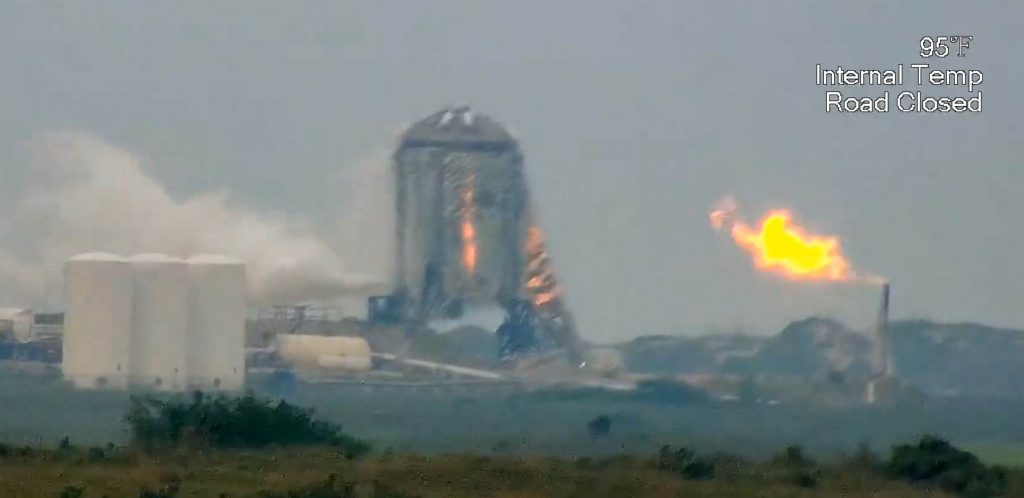
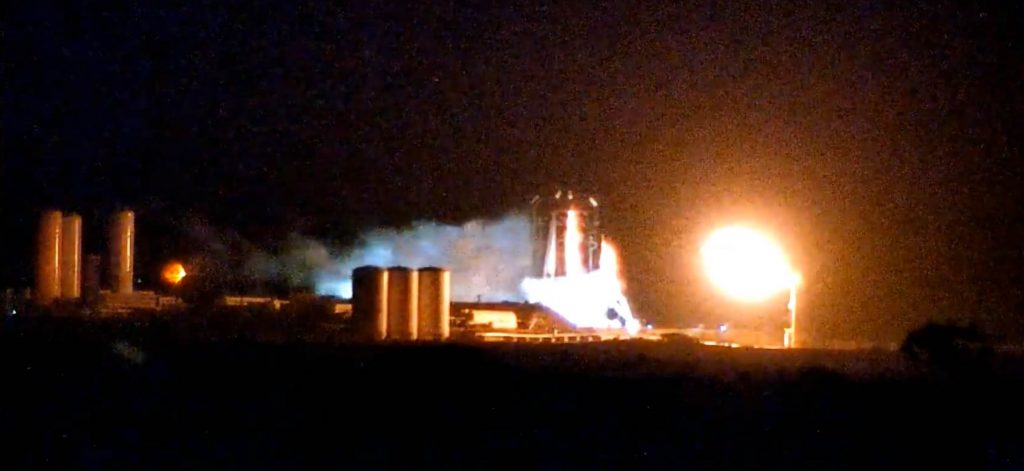
Although the fireworks are so subtle that they are easily missed, the conditions inside the preburner – hidden away from view – are actually far more intense than the iconic blue, purple, and pink flame that exists Raptor’s nozzle. This is because the preburners have to nurture the conditions necessary for the pumps they power to fuel the main combustion chamber. Much like hot water will cool while traveling through pipes, the superheated gaseous propellant that Raptor ignites to produce thrust will also cool (and thus lose pressure) as it travels from Raptor’s preburner to the main combustion chamber.
Thus, if the head pressure produced in the preburners is too low, Raptor’s thrust will be (roughly speaking) proportionally limited at best. At worst, low pressure in the preburners can completely prevent Raptor from starting and running stably and can even trigger a “hard start” or shutdown that could damage or destroy the engine. As such, to preburners fundamentally have to operate at higher chamber pressures (and thus higher temperatures) than the main combustion chamber (the big firey bit at the end). According to Elon Musk, Raptor’s oxygen preburner has the worst of it, operating at pressures as high or higher than 800 bar (11,600 psi, 80 megapascals).
Coincidentally, this is roughly equivalent to the pressure at the bottom of the Pacific Ocean.
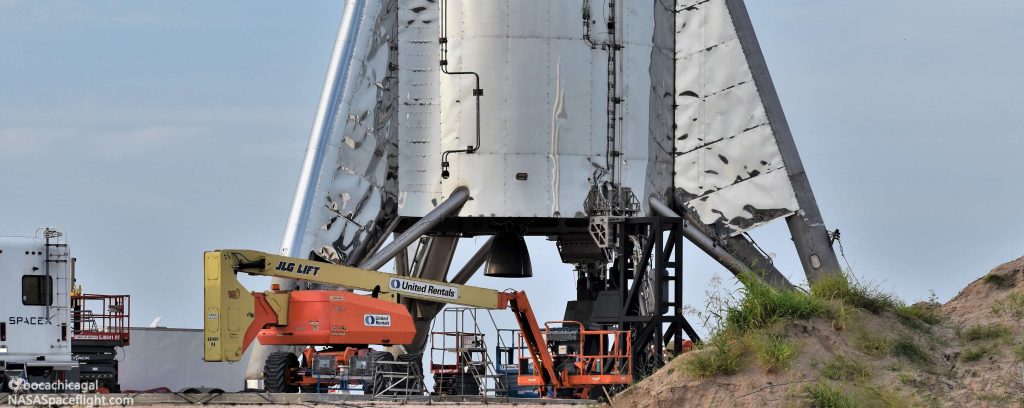
In short, preburner testing is no less critical than full-on static fire testing with an engine like Raptor. July 14th’s test was also made doubly efficient due to the fact that preburner testing requires liquid propellant, which effectively makes the whole test a wet dress rehearsal (WDR) even before any engine ignition or partial ignition is involved. Per SpaceX moving from propellant loading to preburner/turbine testing, Starhopper is almost certainly healthy and operating as expected, an excellent sign that the ungainly vessel may be ready for a static fire of Raptor as early as 2pm CT, July 15th.
Check out Teslarati’s Marketplace! We offer Tesla accessories, including for the Tesla Cybertruck and Tesla Model 3.

Elon Musk
Starlink achieves major milestones in 2025 progress report
Starlink wrapped up 2025 with impressive growth, adding more than 4.6 million new active customers and expanding service to 35 additional countries, territories, and markets.

Starlink wrapped up 2025 with impressive growth, adding more than 4.6 million new active customers and expanding service to 35 additional countries, territories, and markets. The company also completed deployment of its first-generation Direct to Cell constellation, launching over 650 satellites in just 18 months to enable cellular connectivity.
SpaceX highlighted Starlink’s impressive 2025 progress in an extensive report.
Key achievements from Starlink’s 2025 Progress
Starlink connected over 4.6 million new customers with high-speed internet while bringing service to 35 more regions worldwide in 2025. Starlink is now connecting 9.2 million people worldwide. The service achieved this just weeks after hitting its 8 million customer milestone.
Starlink is now available in 155 markets, including areas that are unreachable by traditional ISPs. As per SpaceX, Starlink has also provided over 21 million airline passengers and 20 million cruise passengers with reliable high-speed internet connectivity during their travels.
Starlink Direct to Cell
Starlink’s Direct to Cell constellation, more than 650 satellites strong, has already connected over 12 million people at least once, marking a breakthrough in global mobile coverage.
Starlink Direct to Cell is currently rolled out to 22 countries and 6 continents, with over 6 million monthly customers. Starlink Direct to Cell also has 27 MNO partners to date.
“This year, SpaceX completed deployment of the first generation of the Starlink Direct to Cell constellation, with more than 650 satellites launched to low-Earth orbit in just 18 months. Starlink Direct to Cell has connected more than 12 million people, and counting, at least once, providing life-saving connectivity when people need it most,” SpaceX wrote.
News
Tesla Giga Nevada celebrates production of 6 millionth drive unit
To celebrate the milestone, the Giga Nevada team gathered for a celebratory group photo.

Tesla’s Giga Nevada has reached an impressive milestone, producing its 6 millionth drive unit as 2925 came to a close.
To celebrate the milestone, the Giga Nevada team gathered for a celebratory group photo.
6 million drive units
The achievement was shared by the official Tesla Manufacturing account on social media platform X. “Congratulations to the Giga Nevada team for producing their 6 millionth Drive Unit!” Tesla wrote.
The photo showed numerous factory workers assembled on the production floor, proudly holding golden balloons that spelled out “6000000″ in front of drive unit assembly stations. Elon Musk gave credit to the Giga Nevada team, writing, “Congrats on 6M drive units!” in a post on X.
Giga Nevada’s essential role
Giga Nevada produces drive units, battery packs, and energy products. The facility has been a cornerstone of Tesla’s scaling since opening, and it was the crucial facility that ultimately enabled Tesla to ramp the Model 3 and Model Y. Even today, it serves as Tesla’s core hub for battery and drivetrain components for vehicles that are produced in the United States.
Giga Nevada is expected to support Tesla’s ambitious 2026 targets, including the launch of vehicles like the Tesla Semi and the Cybercab. Tesla will have a very busy 2026, and based on Giga Nevada’s activities so far, it appears that the facility will be equally busy as well.
News
Tesla Supercharger network delivers record 6.7 TWh in 2025
The network now exceeds 75,000 stalls globally, and it supports even non-Tesla vehicles across several key markets.

Tesla’s Supercharger Network had its biggest year ever in 2025, delivering a record 6.7 TWh of electricity to vehicles worldwide.
To celebrate its busy year, the official @TeslaCharging account shared an infographic showing the Supercharger Network’s growth from near-zero in 2012 to this year’s impressive milestone.
Record 6.7 TWh delivered in 2025
The bar chart shows steady Supercharger energy delivery increases since 2012. Based on the graphic, the Supercharger Network started small in the mid-2010s and accelerated sharply after 2019, when the Model 3 was going mainstream.
Each year from 2020 onward showed significantly more energy delivery, with 2025’s four quarters combining for the highest total yet at 6.7 TWh.
This energy powered millions of charging sessions across Tesla’s growing fleet of vehicles worldwide. The network now exceeds 75,000 stalls globally, and it supports even non-Tesla vehicles across several key markets. This makes the Supercharger Network loved not just by Tesla owners but EV drivers as a whole.
Resilience after Supercharger team changes
2025’s record energy delivery comes despite earlier 2024 layoffs on the Supercharger team, which sparked concerns about the system’s expansion pace. Max de Zegher, Tesla Director of Charging North America, also highlighted that “Outside China, Superchargers delivered more energy than all other fast chargers combined.”
Longtime Tesla owner and FSD tester Whole Mars Catalog noted the achievement as proof of continued momentum post-layoffs. At the time of the Supercharger team’s layoffs in 2024, numerous critics were claiming that Elon Musk was halting the network’s expansion altogether, and that the team only remained because the adults in the room convinced the juvenile CEO to relent.
Such a scenario, at least based on the graphic posted by the Tesla Charging team on X, seems highly implausible.







